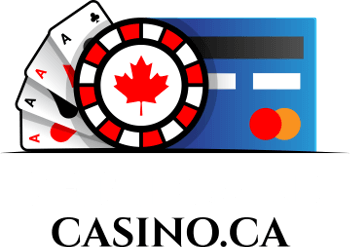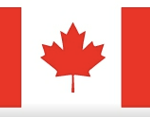How to Use Kelly Criterion in Sports Wagering
 The Kelly Criterion (a.k.a. scientific gambling method), is an effective strategy in every sense of the word. It functions as an investment scale, balancing the equity between risk and reward. For sports bettors, the Kelly Criterion sports betting strategy is capable of maximizing potential profit, while minimizing both volatility and threat of depletion to your bankroll.
The Kelly Criterion (a.k.a. scientific gambling method), is an effective strategy in every sense of the word. It functions as an investment scale, balancing the equity between risk and reward. For sports bettors, the Kelly Criterion sports betting strategy is capable of maximizing potential profit, while minimizing both volatility and threat of depletion to your bankroll.
How to Use Kelly Criterion Betting Strategy in Sports
-
What is Kelly Criterion: It is a mathematical formula that determines the exact amount of money worth investing on a specific bet based on multiple factors.
-
Application in Sports Betting: Punters can use this strategy to decide how much of their overall bankroll to stake on any given wager.
-
Kelly Criterion Formula: To do the math, you’ll need to inject a few figures, including a bet’s potential profit, and the probability of a win or loss, into the formula.
-
Positive Expected Value: Any wager that does not propose a positive expected value (+EV) is not one worth making. The Kelly Criterion puts all that information on the table.
-
The Probability Problem: Evaluating probabilities is the biggest problem with this strategy. Accuracy is impossible when personal opinion drives the figure.
-
Weighing Pros & Cons: Some swear by this method. Others say it’s worthless. We examine both sides of the argument.
|
Disclaimer – Not all forms of gambling are legal in all provinces of Canada. The legal age to gamble also varies by province. Breaking the law is a serious matter. The information provided on this website is meant for educational purposes only, and we will not be held liable for any irresponsible / illegal activity on your part. Know the gambling laws in your province and follow them. The following pages provide more information on Canadian gambling laws:
|
Understanding the Kelly Criterion |
|
This scientific gambling method is based entirely on probability theory. Like most scientific theories, there’s an exact formula to it. I’m sure some of you are groaning over that right now, but there’s a huge benefit to using formulas in gambling. If you do the math right, you can’t possibly make a mistake. That doesn’t mean you can’t lose. It just means that, win or lose, you can be confident you did the right thing. The Kelly Criterion is – in its simplest definition – a theoretical math equation. You, the investor, will input the data from your bankroll and the probable return of your intended investment. The formula will spit out the amount of money you should feel comfortable investing; the amount that would proffer the greatest positive expected value (+EV). |
Kelly Criterion Application in Sports Betting |
|
As it applies to sports wagering, the Kelly Criterion is used to determine precise staking. That is, how much of your bankroll you should be willing to stake on any given bet. When you input all of the required data into the formula – which we’ll explain in the next section – the result is the strategically appropriate amount of money to stake on it. Taking into account the probability of a win or a loss, the scientific gambling method will have you bet a larger percentage of your bankroll on bets that are more likely to win, and a smaller percentage on bets that are more likely to lose. The grater the odds differential, the larger or smaller the stake. One of the most important aspects of this strategy is to understand the probability of winning or losing any bet. Unfortunately, the exact probability is unknown. We can come to a mathematical figure by calculating the risk versus reward, but everyone tends to have their own opinion on how likely on athlete or team is to beat another. Personal opinions complicate the strategy, clouding judgment and making it near impossible to come up with a definitive figure. This is where the Kelly Criterion fails to deliver a perfect strategy, and the very reason sportsbooks haven’t gone out of business due to its existence. Gamblers are still losing based on an inevitably bias calculation of probability. The best advice I can give you is to rely on the probability determined by the odds makers. They are the ones supplying the odds to the sportsbooks, and as we all know, the house always wins in the long term (see Problematic Probabilities below). |
Calculating the Kelly Criterion Formula |
|
The formula for Kelly Criterion is this: (bp – q) / b = fThe variables represented within the formula are as follows: b = Multiple of your stake returned as profit for winning. Decimal odds make this an easy calculation. B = the Odds – 1. If the odds are 2.40, then 2.40 – 1 = 1.4, therefore b = 1.4. p = Probability of winning. If a bet has a 45% chance of success, the probability is 0.45. Determining and calculation of probabilities is discussed in more detail below. q = Probability of losing. If the probability of winning is 45% (0.45), then the probability of losing must be 55%, or 0.55. f = Portion of bankroll to be staked. The result of the equation will be a decimal number. Converted back to a percentage, it decides the amount of your bankroll to stake on a wager. How to Use Kelly Criteria Formula in PracticeNow that you know the variables, let’s inject actual numbers into those spots. We’ll use the same example as above, where the odds are 2.40, the probability to win is 0.45, and the probability of a loss is 0.55. We’ll assume you have a bankroll of $200 to work with. Start with the formula: (bp – q) / b = f Inject your figures: b = 1.4 p = 0.45 q = 0.55 (1.4 x 0.45 – 0.55) / 1.4 = 0.0571 (5.71%) If f = 5.71%, then you should wager 5.71% of your bankroll. With a $200 bankroll… $200 x 0.0571 = $11.42 Even though this wager has a higher chance of losing than winning, the risk versus reward factor – the Kelly Criterion sports betting strategy – states that a wager of $11.42 has a +EV. Which brings us to… |
Positive & Negative Expected Values |
|
I’ll keep this section short and sweet, because that’s what it is. If you do the math come up with a positive result, as in the scenario above, you have a +EV, and therefore should make the bet. If, however, your equation results in a negative integer, the bet has a negative expected value (-EV), and should not be placed. For example, if the odds on that bet in the example above were reduced to 2.20 (where b = 1.2), the result would be -0.0083. This would not be a bet worth making. To make a short story even shorter…
|
Problematic Probabilities in Sports Betting |
|
We already touched on this subject above. There is no way to accurately determine the probability of any sports bet winning or losing. It’s more a matter of personal opinion than anything else. Just watch Sports Centre for an hour or two, and you’ll see what I mean. One person says Team A is going to crush Team B, the other one says no, no, I think Team B has a chance. Then they go back and forth explaining why they feel that way. Every sports fan can relate to this. If we’re able to remove all personal fan bias from the equation, we can come to a closer estimate of win/loss probability, but we still don’t know for sure if it’s accurate. The best way to calculate probability is to listen to the experts. Those experts are the professional odds makers in Las Vegas. They spend every working hour inputting all the data they can find on every athlete and every team, from last week’s injuries to decades worth of past performance records, into a computer. The computer spits out a prediction for the game, and that prediction determines the original odds for every event listed by sportsbooks. Notice I said the “original odds”. This is the key. Odds will shift in either direction as punters place their bets. Sportsbooks shift the lines to ensure they’re getting equal betting on both sides, thus ensuring that no matter what happens, they are most likely to make a profit. Once the lines shift, the accuracy of the original probability prediction becomes skewed. Calculating Probabilities Based on Original OddsYou’re going to have to gather some information from a number of betting options to work out anything close to a genuine probability. For example, we can use the data from the point spread and the over/under totals to determine the probabilities on a straight bet to win. Let’s say a sportsbook posts the opening point spread for a basketball game at Team A -5, Team B +5. This means they believe that Team A is going to win by 5 points. Now, look at the over/under totals line for the same match up. If they have the total set at 181, we can get the exact scores that the odds makers predicted. If the total score is 181, and Team A is going to win by 5 points, then the final score should be 93-88. Now, we look at the straight bet on this game, and we see the lines set at Team A 1.65, and Team B 2.70. We know Team A is considered more likely to win by a score of 93-88; a 5 point differential with a total of 181 points. Assuming that’s what happens, we can figure out a probability based on these numbers. The equation is: (100 / Total Score) x Team A Score = Win Probability So… (100 / 181) x 93 = 51.38 That means Team A has been given a 51.38% win probability. The opposite of that, [100 – 51.38 = 48.62] represents Team A’s loss probability of 48.62%. Conversely, we can give Team B a 48.62% chance to win, and 51.38% chance to lose. Inject those numbers into the Kelly Criterion formula with the available odds, and the result will be as accurate as reasonably possible. |
Pros & Cons of Kelly Criterion Strategy |
||||
|
If you’ve been following along, the Kelly Criterion betting strategy sure seems like a fantastic concept. You only make +EV wagers. The higher the +EV, the more of your bankroll you should bet on it. The pros are clearly there, but so are the cons, like the inability to import accurate probabilities. Let’s take a closer look at the pros and cons, side by side.
Final Thoughts – Use Your Own JudgmentAs someone who doesn’t mind doing a little math (with or without a calculator required), I find the precision of the formula to be incredibly simple, straight forward and convenient. It helps to remove the uncertainty from any wager – so long as you eliminate fan bias from your determination of probability (which is why I suggest using the odds makers opening lines). I believe this sports betting strategy is great for identifying high +EV bets, but I’m not so sure I agree with the stake sizing in some circumstances. One common rule of thumb is to never bet more than 5% of your bankroll on a single wager. A lot of people limit themselves to 2% at most. In the formula example above, the result suggested betting 5.71%. If that seems a bit too aggressive, you’ll need to use your own judgment in limiting your stakes. |
 Jackpotcity.com is our editorial pick for your gaming needs. Currently offering an entire suite of casino games, as well as a wide range of Canadian deposit options, JackPotCity truly offers world-class gaming.
Jackpotcity.com is our editorial pick for your gaming needs. Currently offering an entire suite of casino games, as well as a wide range of Canadian deposit options, JackPotCity truly offers world-class gaming.





